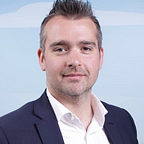Resilient cities — Insurers: Watch and learn.
Saudi Arabia launches a 100% pedestrian, carbon neutral, 170km new city.
During the first days of 2021, the Crown Prince of Saudi Arabia announced the building of a brand new city called “The Line”. A 170km long city, carbon neutral and 100% pedestrian. This city will be home to 1 million inhabitant and oriented toward resilience.
A system of hyper speed underground transportation will ensure a commute in no longer than 20 minutes.
All major center of gravity like shopping malls, offices will be in 5mn walking distance of main living spaces. This city is designed to become one of the world’s major Tech Hub.
Should this type of city become the norm, it will force insurers to rethink their approach to risk and underwriting.
Opportunity Space:
The interesting question with “The Line” is to wonder if Saudi Arabia is building a template of what a resilient city, built from the ground up will look like in the near future.
One can assume that this city will be hyper connected, will use circular and locally created resources to fuel its own consumption, will use new and resilient building materials.
All those assumptions, if proven true and carefully monitored, will help understanding how the risk profile of a built environment will shift over time and how an insurer may harness it to remain relevant.
Why should insurers care?
The city will be hyper connected, and sensors will generate real time data that can be consumed for pricing.
Buildings will be energy efficient, the technology utilized may create new risks or shift existing ones.
Perhaps more interestingly “The Line” will be 100% pedestrian. This represents a major change as it will completely remove risks associated with ground transportation.
No more road related accidents, no need for parking spaces, no need for petrol stations, bus stations, no need for ride sharing services, etc…
The removal of ground transportation means that for a General Insurers, the value pool associated with Motor Vehicle insurance will completely disappear.
Should “The Line” become a glimpse of the future metropolitan areas, this represents a clear call for action for insurers to think about alternative sources of revenue.
Transportation in “The Line” will be done through a network of hyper-speed underground train. This means that the risk will shift from the roads to underground but due to its novelty it will be very difficult to develop asset centric insurance products. Perhaps an alternative source of revenue would be through insuring mobility (insuring the person) rather than insuring the assets.
